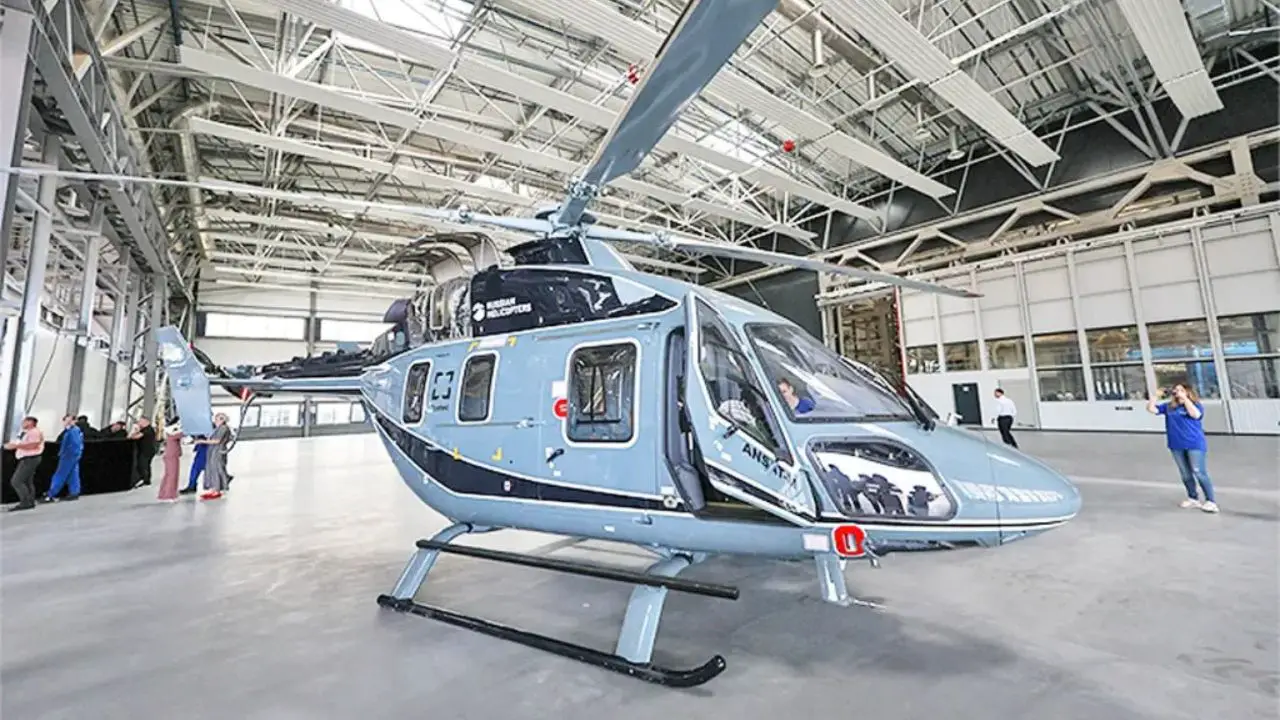Flight tests for the import-substituted version of the light multi-purpose helicopter “Ansat-M” started at the Kazan Helicopter Plant (KHP), which is a subsidiary of the Russian Helicopters holding within the state corporation Rostec. The initial substantial test phase, which involved the execution of a hover mode (vertical lift without horizontal movement), was effectively concluded on July 29, 2025.
The major innovation of the new “Ansat” variant is the substitution of Canadian PW207K engines manufactured by Pratt & Whitney Canada, which were discontinued in 2022, with domestic VK-650V turboshaft engines, which were certified in early 2025. The UEC-Klimov concern developed the VK-650V engines, which are capable of producing 650 hp. They are intended to power light and multi-purpose helicopters, such as the Ansat and the Ka-226T. Development of this engine commenced in 2019, and it was the first series-produced Russian helicopter power unit in the 650-750 kW class.
The “Ansat-M” incorporates a significant number of domestic equivalents to replace critical systems, in addition to the powerplant. In particular, Russian-made avionics components, control actuators, autopilots, and cabin elements were installed. The existing domestic components are used to the fullest to expedite import substitution. Control actuators and the autopilot were sourced from the extensively operated Mi-171 helicopter, while avionics components, such as displays, were adapted from the limited-series Mi-38. Furthermore, unconventional solutions were implemented, including the reengineering of imported samples to manufacture door locks and the utilization of automotive industry floor coverings.
The Ministry of Industry and Trade of the Russian Federation announced a competition in spring 2025 to enhance the performance of the “Ansat” and substitute additional imports. The primary goals are to provision the helicopter with an anti-icing system and increase its maximum takeoff weight from 3.6 to 3.8 tons. The “Ansat-M” has a flight range of 400 km without additional fuel tanks, according to KHP General Director Magomed Zakurzhaev. The implementation of such tanks has the potential to increase the range to 550-600 km.
The new helicopter version must receive type certification by the end of 2027 in accordance with the current tender terms. The comprehensive aviation industry development program anticipates the production and delivery of up to 187 “Ansat” units by 2030, although the precise timelines may change due to the anticipated commencement of serial production of the new version in 2027 or later.
Currently, Russian civil aviation operates approximately 60 previously manufactured Ansat helicopters. These helicopters are capable of transporting up to seven passengers or 1200 kg of useful cargo. The National Air Ambulance Service is the main operator, with a fleet of 37 machines. According to the Kazan publication “BUSINESS Online,” 23 “Ansats” were exported, including 19 to Zimbabwe, 3 to Bosnia and Herzegovina, and 1 to Turkmenistan, in addition to Russia. Additionally, the Russian Armed Forces employ a number of these helicopters for pilot training, with unofficial sources estimating that there are over 60 units in operation.
The “Ansat” was modernized with a complete transition to domestic components, which was a critical milestone in the revival of production of one of Russia’s most frequently used light helicopters. Significant disruptions were caused by the cessation of Canadian engine supplies in 2022; however, advancements in industrial production and import substitution are now feasible as a result of emerging technologies and components.
Two VK-650V turboshaft engines, each producing 650 horsepower, equip the import-substituted “Ansat-M” aircraft. Additionally, it boasts a higher maximum takeoff weight of 3,800 kg. It has the capacity to transport a useful cargo of up to 1,200 kg and can seat a maximum of seven passengers. The helicopter’s flight range is approximately 400 km without the installation of auxiliary fuel tanks, but it has the potential to increase to 550–600 km when such tanks are installed. Furthermore, the “Ansat-M” is equipped with Russian-made avionics, control systems, and an autopilot, and an anti-icing system is currently in the process of being developed for integration into the updated version.
The Kazan Helicopter Plant plans to commence serial production of the “Ansat-M” in 2025. However, certification and the availability of domestic components may cause a delay in the production of initial units. This initiative is considered an indispensable measure for guaranteeing the Russian helicopter industry’s technological sovereignty and national security.
The start of flight tests for the “Ansat” with VK-650V Russian engines and the complete replacement of imported units is significant news for Russian civil helicopter manufacturing, as it demonstrates a decrease in reliance on foreign technologies and the fortification of the domestic aviation industry.
Official Website of Youtube Channel – Altitude Addicts
